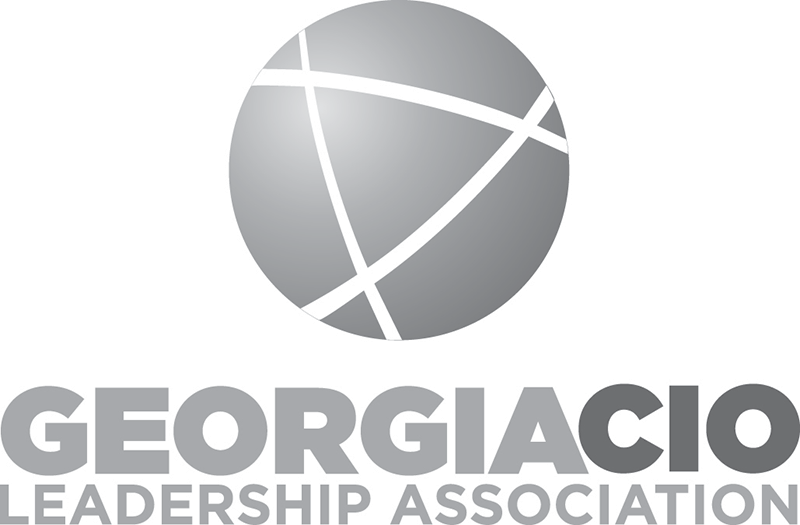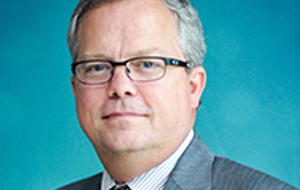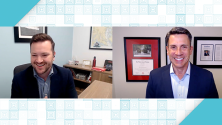Editors' Note: This is the fourth in a series of Q&As covering the winners of the Georgia CIO Leadership Association CIO of the Year Awards.
As CIO for the Financial Risk and Management Solutions division of Fiserv, Brian Sondergaard reduced development expense by more than $9 million, increased overall throughput by more than 27 percent and launched 53 new product releases over the last year.
 His leadership helped him secure the prestigious Georgia CIO of the Year award in the Global category from the Georgia CIO Leadership Association (GeorgiaCIO). Sondergaard says he enjoys being part of the organization because it offers him many opportunities to collaborate with peers in his community.
His leadership helped him secure the prestigious Georgia CIO of the Year award in the Global category from the Georgia CIO Leadership Association (GeorgiaCIO). Sondergaard says he enjoys being part of the organization because it offers him many opportunities to collaborate with peers in his community.
“The commitment to one another to raise up our collective talent is amazing,” said Sondergaard. “I don’t personally know of any other forum that provides the same level of engagement amongst this kind of IT leadership community across Georgia.”
We caught up with him to learn more about his IT transformation.

The Enterprisers Project (TEP): Your recent achievements as CIO for the Financial and Risk and Management Solutions division of Fiserv are impressive. Can you talk about how you approached this transformation within IT?
 Brian Sondergaard: The financial services sector is one that’s experiencing a lot of change and growth, and my team at Fiserv is responsible for producing the products and operating the hosting services that form the foundation of business value for the organization. So, in order to keep delivering value in the face of all that change, my first and foremost priority must be to continually demonstrate that we can better serve the needs of our clients, and as a result, create growth for our shareholders. For our business, it all starts with sustainable revenue growth.
Brian Sondergaard: The financial services sector is one that’s experiencing a lot of change and growth, and my team at Fiserv is responsible for producing the products and operating the hosting services that form the foundation of business value for the organization. So, in order to keep delivering value in the face of all that change, my first and foremost priority must be to continually demonstrate that we can better serve the needs of our clients, and as a result, create growth for our shareholders. For our business, it all starts with sustainable revenue growth.
To tackle this, I put in place a continuous improvement program that we refer to as “responsive, ongoing improvement,” or ROI. This program elevates the conversations within IT and my staff across the globe to focus on business results.
TEP: What are some things you do to keep your team focused on business results?
Sondergaard: We thought about this program in terms of four pillars. Our first initiative was to develop a culture for learning and innovation. There’s roughly 600 people on my team. If we could get those 600 people to thirst for new ways of thinking about solving problems every day – to be hungry for new skills, new techniques, and new tools for achieving business results – then we have a better chance of leveraging that collective intelligence to drive for new levels of performance. So across the board, we sought to provide the technology or tools, or talent and skills, or organizational structure and approach, that people needed to comfortable with learning and innovating everything that they do every day.
The second pillar is to pursue operational excellence. I believe strongly that if we layer in a set of capabilities around our operations, and strive for discipline and maturity in those capabilities, then we can eliminate waste from the system, and we can improve quality, and move faster. When I think about operational excellence, I can’t help but think about the people, processes, and tools that make up that system. If everybody within the system understands how it operates and can think about it as an integrated capability across the globe, then they can recognize where we can mature, where we can increase discipline, and where we can achieve improved performance.
Increase quality and client satisfaction is our third pillar. We have around 150 products and 4,000 clients, and those clients count on us every day to solve their most important problems. We want for those clients to view us as one of their most trusted partners, and I believe that loyalty naturally comes from them feeling that we’re invested in their outcomes. By looking at the world through their eyes, and trying to make their lives easier on a daily basis is one way I think we can accomplish that.
Our final pillar is to position the business for growth. We have, as I mentioned, a large portfolio, and this effort ensures we are putting investment in the places that have the greatest chance of leading to meaningful solutions to the most important problems we face as a business. It also keeps us from falling into the trap of “business as usual.”
TEP: How do you measure and communicate the success of this program?
Sondergaard: I feel really strongly that there’s a trap for us in IT. There's a tendency to want to set up measurement in terms of things that we personally control, or that are easy to count. And in business, most interesting things are neither easy to control nor easy to count. So when I developed this program to begin with, it started with getting an agreement from the entire extended leadership team that the performance of IT was going to be measured in exactly the same terms as we measured the performance of the business.
Working closely with my business peers through a series of workshops, we were able to create a vision for IT, and out of that vision came the four pillars. Having those pillars, and being able to use them as the underlying foundation for who we are and how we operate, allows us to bring our vision forward in all of our communications. Every goal that's established, whether it's for somebody in IT, or development, or product support, or quality, it's traceable to one of those four pillars.
As we communicate our objectives for the year, and our performance against those objectives, we can continually show how everything we do is working toward achieving our overall vision for IT and the business.
TEP: Can you speak to the impact that these pillars have had on the culture within IT?
Sondergaard: It has been a major culture change. It's putting people in a position where they can safely behave differently than they did before, and then feel good about the results of that changed behavior. As people gain confidence by seeing the outcomes associated with new behaviors, then folks gradually get more comfortable with the change. And then it becomes the new culture.
When the whole organization begins to understand what’s valuable to the business, not just what’s valuable to IT, that's when teams can being to accomplish much more than they ever thought that they could.







